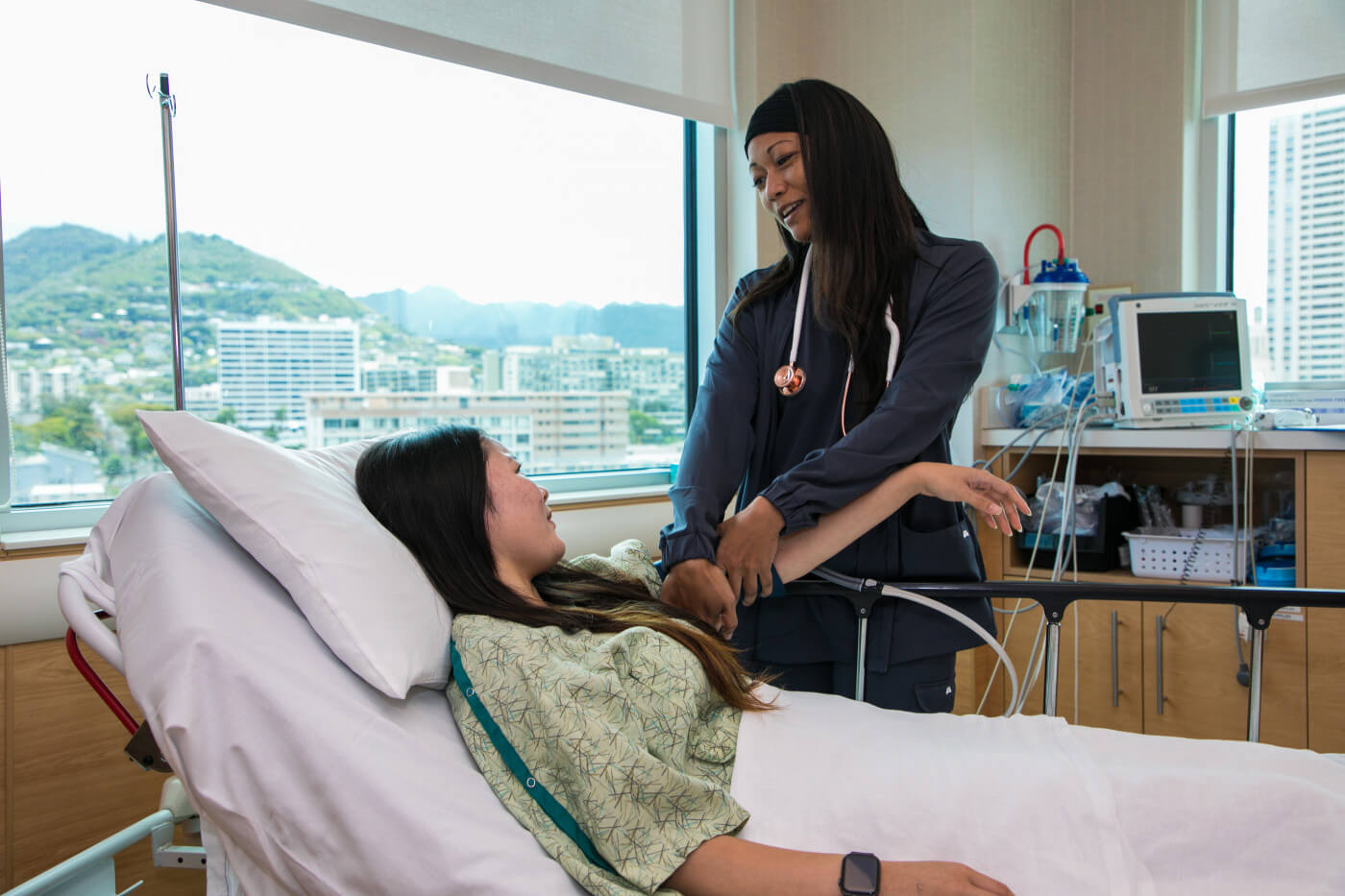Tips for Effective Communication With Patients With Disabilities
Written by Lizzette Cruz, RN, MS
As nurses, we take on many roles. One of our most important is that of patient advocate. In order to succeed in this role, we must strive for effective communication一not only with other healthcare professionals, but also with each of our patients. Effective communication with our patients is critical in providing high quality nursing care and can influence patient outcomes.
What does effective communication look like? Effective patient-nurse communication is different for everyone. Every patient has individual needs and unique challenges. No matter the challenges, it’s imperative to remain focused on the goal to fully understand your patient’s current situation, needs, and concerns.
Communication is taught as part of our nursing school curriculum. But, as with any nursing skill, you don’t learn to master it until you pull on your medical scrubs and practice.
Read on for helpful tips to utilize effective communication with patients with disabilities, special needs, or language barriers.
All Patients with Disabilities
-
Take the time to not only understand your patient, but also to ensure they understand you. Be supportive and flexible as you communicate and follow their verbal and non-verbal cues.
-
Acknowledge your patient as an individual. Many patients are accompanied by a caregiver. Remember to speak directly to your patient and not to their caregiver whenever possible. Encourage your patients to actively participate in their own health care decisions.
-
Make eye contact if culturally appropriate. Sit or stand at eye level and make eye contact when speaking with your patients.
-
Offer assistance and wait for your offer to be accepted. Do not assume that your patients will need and want your help.
Patients with Mobility Limitations
-
Keep personal space in mind. Personal space for patients includes any of the assistive devices they may be using, such as a wheelchair, walker, or cane.
-
Ensure these devices are available or within reach of the patient. Always ask before moving these devices or assisting them.
-
Give directions that include distance, physical objects, and challenges.
Patients with Vision Loss
-
Introduce yourself as you approach the patient and inform them when you leave.
-
Speak in a normal tone. Do not shout.
-
Be as descriptive as possible when providing directions. For example, if you’re guiding them up the stairs, provide them with the number of stairs.
-
Never pet or distract a service animal unless the patient has given you permission.
Patients with Hearing Loss
-
Ask for the patient’s preference in communicating and eliminate background noise as much as possible.
-
If patients use an assistive hearing device, ensure these are available that the patient uses them while you communicate with them.
-
Speak in a normal tone and do not raise your voice unless specifically asked to do so.
Patients with Speech Difficulties
-
Be patient. Do not speak for the patient or attempt to complete their sentences.
-
Do not pretend to understand. Let your patient know you do not understand and look for other ways to get a message across, such as using paper and pen, hand gestures, etc.
-
When information is needed quickly, develop short questions that require a ‘yes’ or ‘no’ response.
Patients with Intellectual, Cognitive, or Developmental Disabilities
-
Use simple, direct sentences or other forms of visual communication such as diagrams, or gestures.
-
Give exact instructions and avoid giving too many directions at once to reduce confusion.
-
Recognize that the patient may need to have information, directions, or questions repeated more than once and in different ways.
Some patients may experience disabilities which may not be immediately visible (autoimmune disease or language barriers). One of the first steps you can take is to ask patients if they will require any accommodations during their visit. Communicate these needs to other providers. Learning to communicate with disabled patients can enable the patient to overcome the barriers they face when seeking quality health care. As nurses, we should empower ourselves to help eliminate these barriers and provide the best care.
And remember, practice makes perfect! There is always another chance to connect better with your patients.
About the Author
Lizzette Cruz, RN, MS is a nurse writer specializing in health and wellness content with 8+ years of experience in the Cardiovascular Research field. Her background includes a BS in Physiology and MS in Nursing. You can find her on Instagram on @thenursespen
References:
Okoro CA, Hollis ND, Cyrus AC, Griffin-Blake S. Prevalence of Disabilities and Health Care Access by Disability Status and Type Among Adults — United States, 2016. MMWR Morb Mortal Wkly Rep 2018;67:882–887. DOI: http://dx.doi.org/10.15585/mmwr.mm6732a3
Pagliuca, Lorita Marlena Freitag et al. Validation of the general guidelines of communication of nurses with the blind. Brazilian Journal of Nursing [online]. 2014, v. 67, n. 5 [Accessed 25 March 2022] , pp. 715-721. Available in: <https://doi.org/10.1590/0034-7167.2014670507>. ISSN 1984-0446. https://doi.org/10.1590/0034-7167.2014670507.
Disability Communication: Etiquette and Communication Methods : Disabled World (disabled-world.com)
Communicating with People with Disabilities (nln.org)
The Importance of Effective Communication in Nursing | USAHS





